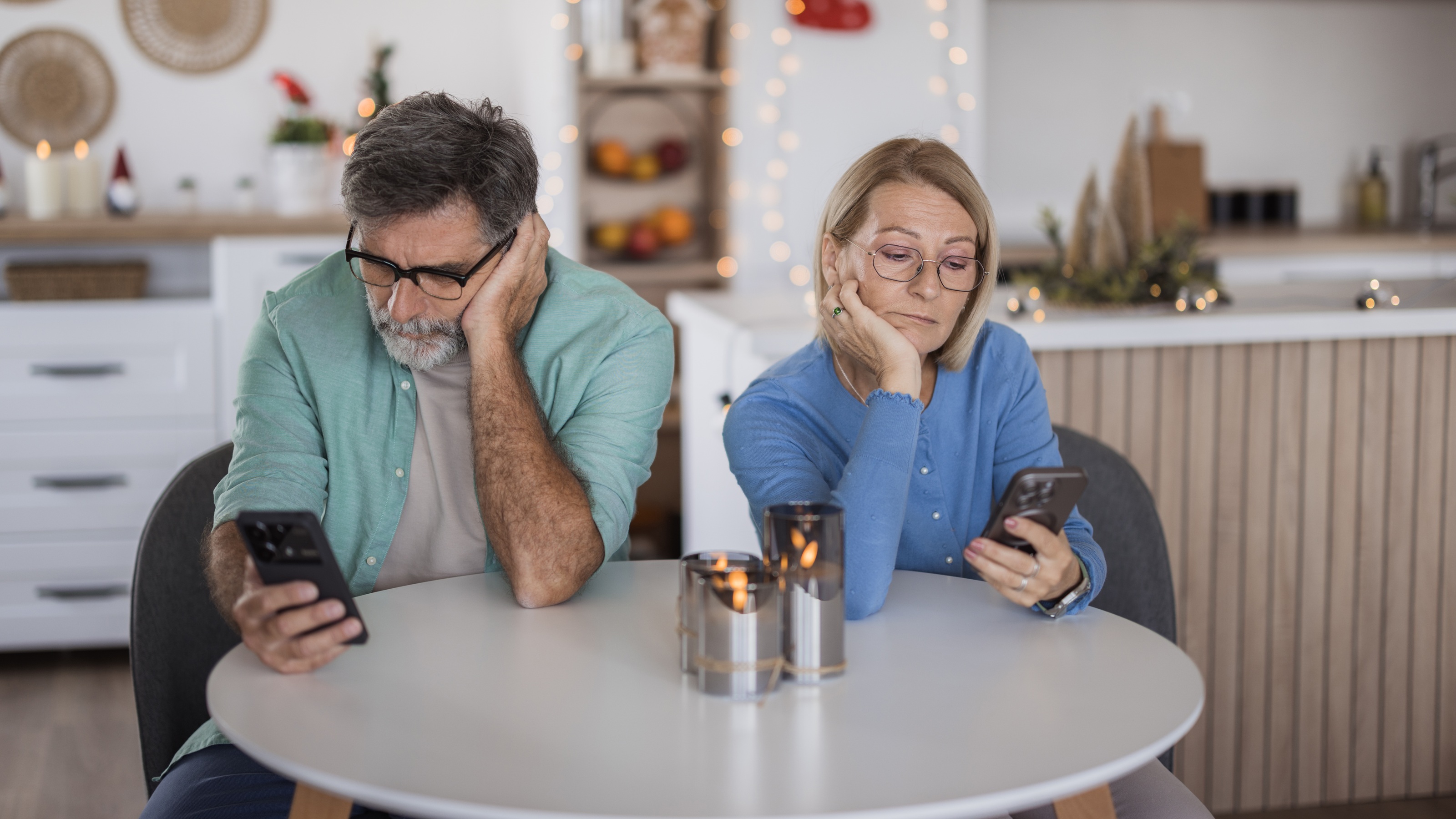Four Tips to Keep Your Wealth Transfer on Track
Incorporating family legacy planning into your financial plan is crucial to ensure the next generation knows how to serve as good stewards of the family’s wealth.


The Great Wealth Transfer is under way, and an estimated $84 trillion will change hands in the U.S. by 2045 as wealth accumulated by the Silent Generation and Baby Boomers makes its way to the next generations, according to Cerulli Research Group.
Studies show that successful multigenerational wealth transfer is easier said than done. In fact, 90%of affluent families see their wealth dissipate by the third generation, according to a study by The Williams Group. With this in mind, it is imperative for investors to consider the proactive measures they can implement today to defy this trend.
When preparing for a multigenerational wealth transfer, there are three foundational steps to address:
From just $107.88 $24.99 for Kiplinger Personal Finance
Become a smarter, better informed investor. Subscribe from just $107.88 $24.99, plus get up to 4 Special Issues

Sign up for Kiplinger’s Free Newsletters
Profit and prosper with the best of expert advice on investing, taxes, retirement, personal finance and more - straight to your e-mail.
Profit and prosper with the best of expert advice - straight to your e-mail.
- Collaborating with advisers to establish a sound financial plan.
- Partnering with attorneys to draft a comprehensive estate plan.
- Collecting and organizing crucial information — such as trust documents, account statements, etc. — all in one centralized location. There are resources available online to help families document their complete financial inventory.
While these initial steps are absolutely necessary, there is another component that is arguably even more important — family legacy planning. Often dubbed as the “softer side” of wealth management, it's an aspect that is sometimes overlooked, yet it may hold the key to long-term success. Surprisingly, the breakdown of wealth transfer is seldom due to inadequate financial planning or tax and legal complexities, according to The Heritage Institute and the book Entrusted by Andrew Howell and David York. Instead, the primary cause of unsuccessful outcomes lies in a lack of communication and trust.
We believe there is a burgeoning area in wealth management dedicated to family legacy planning. It is not surprising that with an aging population, an increasing number of financial professionals are opting to specialize in this field. We have identified four key strategies:
1. Openly communicating
Open and clear communication within the family is the cornerstone of a successful multigenerational wealth transfer. While this might seem basic, it is surprising how many families avoid these conversations.
Discussing your estate and financial plans with your loved ones helps align everyone's expectations and ensures they understand your intentions. Sharing the “why” of your estate is as important as the “what,” as this approach fosters trust, reduces the potential for disputes and empowers the next generation to be responsible stewards of the family's wealth.
2. Having regular family meetings
Family meetings serve as a crucial platform for open and constructive communication within the family. They provide a structured environment where family members can come together in a way that promotes transparency, alignment of goals and the nurturing of shared values.
A typical family meeting might include obvious topics — such as updates on the family’s estate plan and discussions about investment strategies — as well as unexpected topics like philanthropic goals, drafting a family mission statement, capturing family history and investment education for the rising generation.
It is also an opportunity for every family member to voice their thoughts, ask questions and contribute to the decision-making process. This structured approach ensures that everyone is on the same page and helps forge a unified path toward realizing the family's mission and preserving its legacy.
3. Creating a family mission statement
A mission statement is a short summary of what matters most to you as a family, the principles that guide you. Creating a mission statement together is a powerful way to reflect upon your values as a family and gives everyone a clear understanding of what you stand for and expect of each other.
Having a shared vision — a clear purpose, values and goals — provides a roadmap that lays out where you are headed as a family and how you will get there. It provides a clear framework and set of expectations to follow based upon your agreed-upon values and beliefs.
4. Building financial acumen
Financial education is crucial for the next generation. It empowers them with the knowledge and confidence to handle inherited wealth. This ensures they can make informed investment decisions and contribute to preserving and growing the family's assets, aligning with the family's values and goals.
With financial literacy, they are better prepared to navigate the complexities of wealth, ensuring a successful and responsible wealth transfer.
Putting it all together
Transferring wealth from one generation to the next can be challenging, but taking the time to help your family prepare for what’s ahead creates the best chance for success. Family legacy planning is an ongoing effort, not a one-time task. Embrace the journey, and with each step, you'll further solidify your family's financial legacy and discover the meaning of true “wealth” in a family.
Related Content
- Gen X Should Prepare Now for the Great Wealth Transfer
- Your Home Would Be a Terrible Inheritance for Your Kids
- How to Prepare for Upcoming Estate Tax Law Changes
- Uncertain Times Call for Creative Estate Planning Strategies
- IRS Quietly Changed the Rules on Your Children’s Inheritance
Profit and prosper with the best of Kiplinger's advice on investing, taxes, retirement, personal finance and much more. Delivered daily. Enter your email in the box and click Sign Me Up.

Krysta Dos Santos, CFP, is Head of Financial Planning at GenTrust. Krysta works to understand each client’s financial situation and then designs a customized plan to help them attain those targets they wish to achieve. She has a holistic approach that takes into consideration a variety of wealth management topics such as estate planning, tax strategies, philanthropic giving, risk mitigation, cash flow management, education funding and family legacy planning.
-
 I'm want to give my 3 grandkids $5K each for Christmas.
I'm want to give my 3 grandkids $5K each for Christmas.You're comfortably retired and want to give your grandkids a big Christmas check, but their parents are worried they might spend it all. We ask the pros for help.
-
 If You're Not Doing Roth Conversions, You Need to Read This
If You're Not Doing Roth Conversions, You Need to Read ThisRoth conversions and other Roth strategies can be complex, but don't dismiss these tax planning tools outright. They could really work for you and your heirs.
-
 Could Traditional Retirement Expectations Be Killing Us?
Could Traditional Retirement Expectations Be Killing Us?A retirement psychologist makes the case: A fulfilling retirement begins with a blueprint for living, rather than simply the accumulation of a large nest egg.
-
 I'm a Financial Planner: If You're Not Doing Roth Conversions, You Need to Read This
I'm a Financial Planner: If You're Not Doing Roth Conversions, You Need to Read ThisRoth conversions and other Roth strategies can be complex, but don't dismiss these tax planning tools outright. They could really work for you and your heirs.
-
 Could Traditional Retirement Expectations Be Killing Us? A Retirement Psychologist Makes the Case
Could Traditional Retirement Expectations Be Killing Us? A Retirement Psychologist Makes the CaseA retirement psychologist makes the case: A fulfilling retirement begins with a blueprint for living, rather than simply the accumulation of a large nest egg.
-
 I'm a Financial Adviser: This Is How You Can Adapt to Social Security Uncertainty
I'm a Financial Adviser: This Is How You Can Adapt to Social Security UncertaintyRather than letting the unknowns make you anxious, focus on building a flexible income strategy that can adapt to possible future Social Security changes.
-
 I'm a Financial Planner for Millionaires: Here's How to Give Your Kids Cash Gifts Without Triggering IRS Paperwork
I'm a Financial Planner for Millionaires: Here's How to Give Your Kids Cash Gifts Without Triggering IRS PaperworkMost people can gift large sums without paying tax or filing a return, especially by structuring gifts across two tax years or splitting gifts with a spouse.
-
 'Boomer Candy' Investments Might Seem Sweet, But They Can Have a Sour Aftertaste
'Boomer Candy' Investments Might Seem Sweet, But They Can Have a Sour AftertasteProducts such as index annuities, structured notes and buffered ETFs might seem appealing, but sometimes they can rob you of flexibility and trap your capital.
-
 Quick Question: Are You Planning for a 20-Year Retirement or a 30-Year Retirement?
Quick Question: Are You Planning for a 20-Year Retirement or a 30-Year Retirement?You probably should be planning for a much longer retirement than you are. To avoid running out of retirement savings, you really need to make a plan.
-
 Don't Get Caught by the Medicare Tax Torpedo: A Retirement Expert's Tips to Steer Clear
Don't Get Caught by the Medicare Tax Torpedo: A Retirement Expert's Tips to Steer ClearBetter beware, because if you go even $1 over an important income threshold, your Medicare premiums could rise exponentially due to IRMAA surcharges.
-
 I'm an Insurance Pro: Going Without Life Insurance Is Like Driving Without a Seat Belt Because You Don't Plan to Crash
I'm an Insurance Pro: Going Without Life Insurance Is Like Driving Without a Seat Belt Because You Don't Plan to CrashLife insurance is that boring-but-crucial thing you really need to get now so that your family doesn't have to launch a GoFundMe when you're gone.